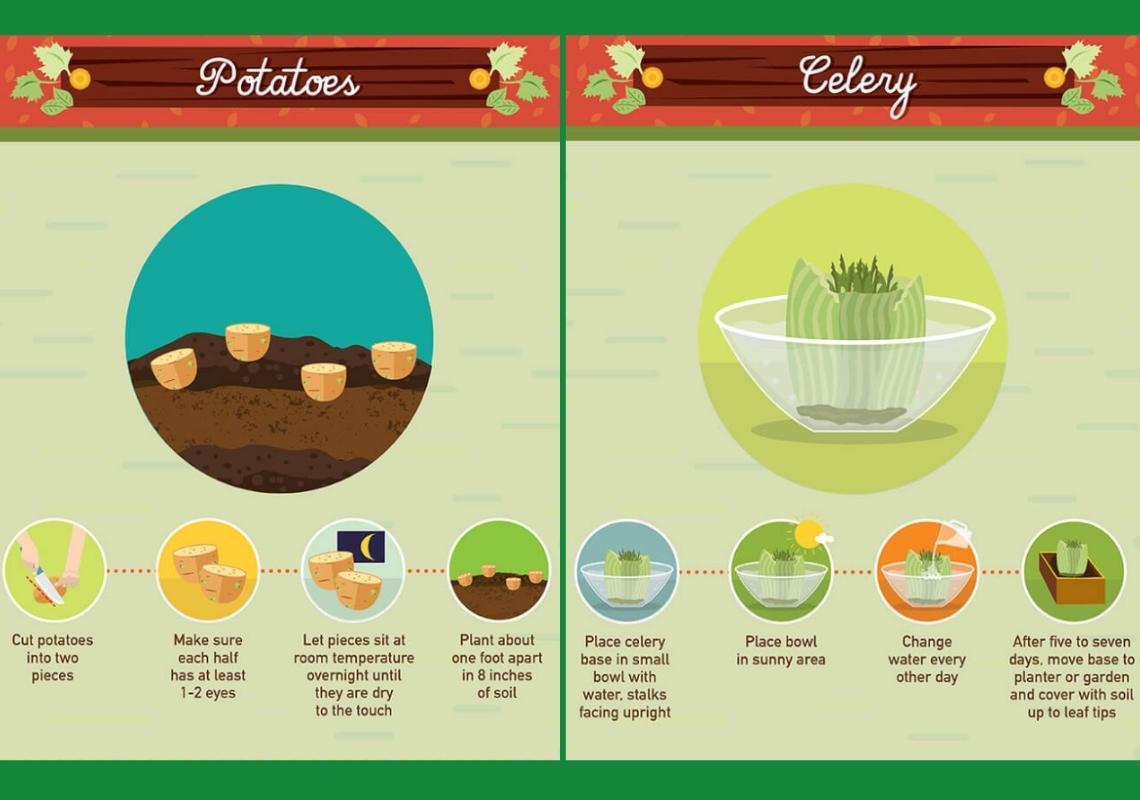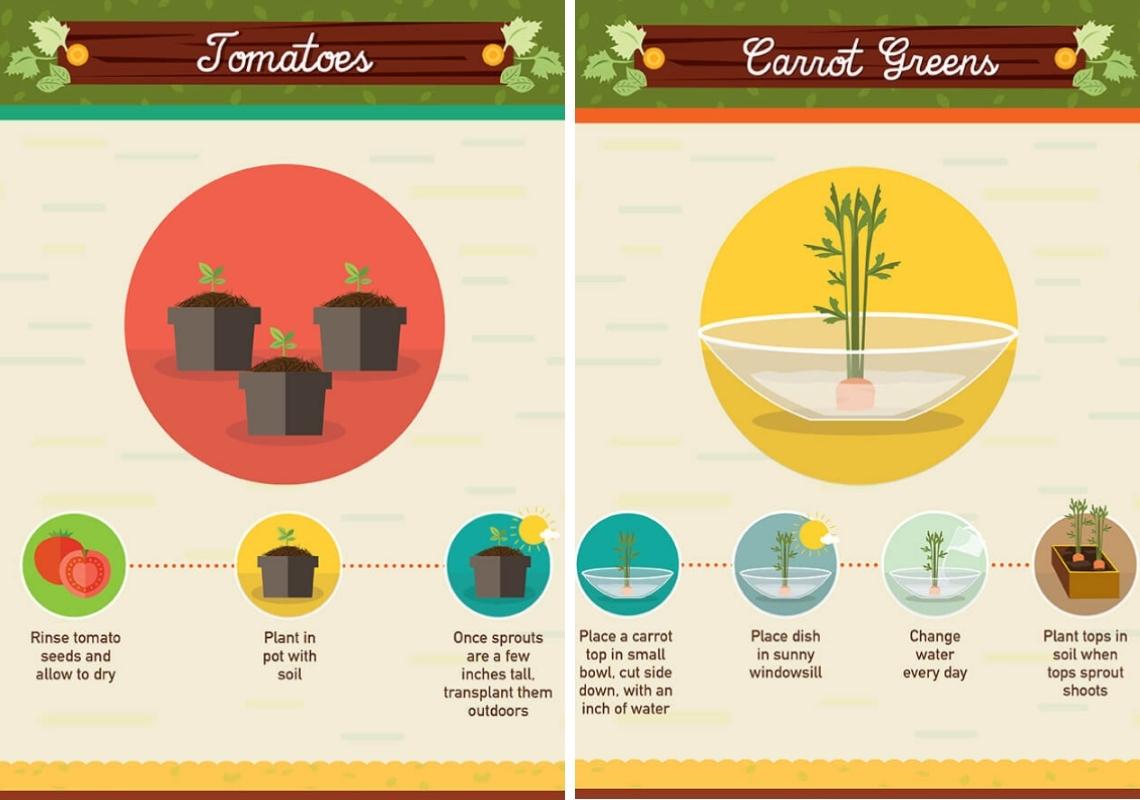Growing Food From Waste
With the cost of living on the rise, we wanted to share some ways you can save money (and the planet!) by making better use of your food waste.
Sounds a bit gross? Don’t worry, we’re not talking about rummaging through your bins, simply prolonging the life of your fresh fruit and vegetables using some easy food growing tips.
What foods can you grow from food waste?

Celery
Step 1: When you have finished cutting celery sticks from a bunch, rinse off the base and place it in a small container (maybe cut the bottom off an old plastic milk bottle and use that).
Step 2: Fill the container with warm water and place the celery cut stalks facing upright. Place the container in a sunny area perhaps on a sunny windowsill or in a greenhouse.
Step 3: Leave for about one week and change the water every other day. Use a spray bottle to gently mist the plant every other day. The tiny yellow leaves around the centre of the base will grow thicker and turn dark green.
Final Step: After five to seven days, move the celery base to a planter, plant pot or into a garden and cover it with soil, leaving the leaf tips uncovered. Keep the plant well-watered especially during hot days. You’ll soon notice celery leaves regenerate from the base, as well as a few small stalks. Harvest when fully grown, then repeat the process.
Potatoes
Step 1: You can grow your own potatoes from your scraps. Cut the potatoes into two halves and ensure each potato half has one or two eyes.
Step 2: The potato halves need to sit at room temperature for a few days or until they’re at least dry to the touch. When the potato halves are dry, you can plant them about a foot apart and in 8 inches of soil.
Final Step: Once they’re fully grown, potatoes can be harvested for several months.
Tomatoes
Step 1: Some people do not like to eat tomato seeds. Instead of composting or disposing of the insides of your tomatoes, you can harvest the seeds and plant them.
Step 2: Rinse the seeds and allow them to dry out. Plant the seeds in a rich potting compost in a container.
Final Step: When the sprouts are a few inches tall you can transplant them outdoors in a grow bag in a greenhouse. Ensure you plant them in a sunny area and water them regularly.

To continue learning more ways to grow your own food from waste, read on here!
What materials do I need to grow food?
If you don’t have a big garden or any gardening materials, don’t worry you can create your own makeshift planters with small containers. Simply cut the bottom off an old plastic milk bottle or use a bowl to grow your food.
Other ways to save money and reduce food waste
Tip #1 – Food Storage
Make sure to store food correctly! Improper storage can lead to food spoilage. Did you know about two-thirds of household waste in the UK is due to food spoiling?
Tip #2 – Serving Size
Ensuring you only cook what you will eat by keep your serving sizes in check. A lot of people over eat or cook to much which results in food be wasted. But could your leftovers be useful?
Tip #3 – Shop smart
Buying in bulk has been proven to waste more food so only buy what you will use, this is cost effective as you will be eating everything you buy.
